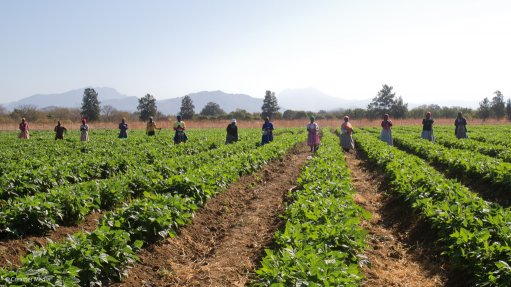
Photo by: Duane Daws
Agriculture employs 5.2% of the workforce but only accounts for 2.5% of annual gross domestic product (GDP), statistician general Pali Lehohla said on Monday.
"Agriculture contributes 2.5% of GDP, but in terms of employment agriculture punches above its weight with 5.2%," he told reporters in Pretoria on Monday.
Lehohla was releasing figures obtained on farming in South Africa during the last population count in 2011. He said a more expansive study would be conducted on agriculture in particular.
The census showed that 2.8-million households were involved in agriculture in some form or another. It contained three questions related to agriculture but did not make a clear distinction between commercial and subsistence farming. A more nuanced picture was needed, Lehohla said.
The provinces with the highest number of households practising agriculture were KwaZulu-Natal with 24.9%, Eastern Cape with 20.7%, and Limpopo with 16.3%. The Northern Cape had the highest proportion of households that reported livestock ownership.
Lehohla said the census data would allow for a follow-up study because government had now identified the households that would be canvassed.
"The purpose was, in part, to give us a frame so that when we go for a fully-fledged agricultural census we know where to go. When we do the agriculture census we will go to those 2.8-million."
Government planned to use the information obtained to strengthen agriculture in a bid to see the sector provide jobs to more people, he said.
Lehohla said the census showed families involved in agriculture in general had poor access to facilities, but the explanation for this might lie more in their location than in any government policy.
"We also know that agriculture is practised in rural areas where the provision of facilities is very difficult. When you look at the Eastern Cape and the altitude, when it comes to things like the provision of water, then it becomes very expensive to provide water."